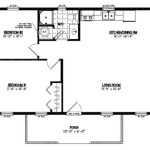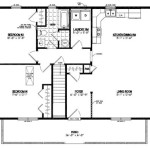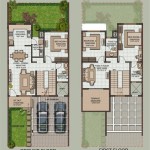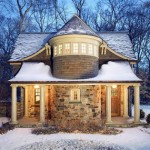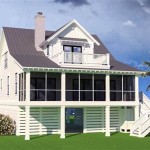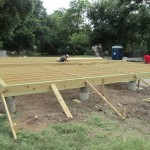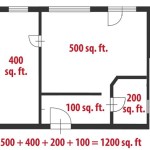Plans For Bluebird House: A Comprehensive Guide
Bluebirds are a cherished sight in many landscapes, known for their vibrant plumage and melodious songs. Providing suitable nesting sites is a crucial component of bluebird conservation efforts. Utilizing well-constructed bluebird houses, built according to specific plans, significantly enhances the chances of attracting these desirable birds to residential areas and natural habitats.
The effectiveness of a bluebird house hinges on its design and construction. Adhering to established plans ensures that the house meets the specific needs of bluebirds regarding dimensions, entrance hole size, ventilation, and predator protection. Deviations from these specifications can render the house unsuitable or even dangerous for the birds.
This article provides a detailed overview of essential considerations when selecting and implementing plans for bluebird houses. It delves into critical design elements and construction techniques that promote a safe and productive nesting environment for bluebirds.
Optimal Dimensions and Materials
The size and shape of a bluebird house are crucial for attracting bluebirds while discouraging other, potentially more aggressive, bird species. Bluebirds prefer houses that offer a snug, secure cavity for nesting. The interior floor dimensions should ideally measure around 5x5 inches. This size provides ample space for the bluebird family but is small enough to deter larger birds from claiming the nest box. A deeper box, around 8 inches from the floor to the bottom of the entrance hole, offers increased protection from predators reaching into the box.
The entrance hole diameter is perhaps the single most crucial dimension. A 1.5-inch diameter entrance hole is recommended for Eastern Bluebirds. This size is large enough for bluebirds to enter comfortably but small enough to exclude most European Starlings, a significant competitor for nesting sites. For Western and Mountain Bluebirds, a slightly larger 1 9/16-inch hole may be preferable. Regularly monitoring the nest box and addressing any issues with larger birds attempting to use the box is recommended, even with a properly sized entrance hole.
Material selection plays a vital role in the durability and suitability of a bluebird house. Untreated cedar, redwood, or pine are all excellent choices. These woods are naturally resistant to decay and insects, which translates to a longer lifespan for the house. Avoid using treated lumber, as the chemicals can be harmful to the birds. Pressure-treated wood is often infused with arsenic and other substances that can leach into the nest and affect the health of the bluebird chicks.
The thickness of the wood should be at least ¾ inch to provide adequate insulation. This helps to moderate temperature fluctuations inside the nest box, keeping it cooler in the summer and warmer in the winter. Thicker wood also provides better protection from predators and the elements.
Fasteners are another important consideration. Use corrosion-resistant screws or nails, such as stainless steel or galvanized options. These will prevent rust and ensure the house remains structurally sound for many years. Avoid using staples or small nails, as they may loosen over time and compromise the integrity of the structure.
Ventilation, Drainage, and Predator Protection
Proper ventilation is essential for maintaining a healthy environment inside the bluebird house. Without adequate ventilation, the nest can become excessively hot and humid, especially during warmer months. This can lead to overheating, dehydration, and even death of the chicks. Ventilation holes should be located near the top of the box, typically on the sides, to allow for air circulation. Two or three ¼-inch diameter holes are usually sufficient for a standard-sized bluebird house.
Drainage is equally important to prevent water from pooling inside the nest box. A damp nest can create a breeding ground for bacteria and fungus, which can be detrimental to the health of the bluebird chicks. Drill several ¼-inch diameter drainage holes in the floor of the house. These holes should be spaced evenly to ensure effective water drainage. The floor should be slightly recessed or grooved to facilitate drainage and prevent water from accumulating.
Predator protection is a critical aspect of bluebird house design. Raccoons, snakes, squirrels, and cats are all potential predators that can raid bluebird nests and kill the chicks or adult birds. Several design features can help deter predators. A predator guard, such as a metal cone or baffle, mounted below the house on the pole can prevent predators from climbing up to the nest box. The entrance hole can also be protected with a metal guard to prevent predators from enlarging the hole and reaching into the box.
Another effective predator deterrent is to mount the bluebird house on a smooth metal pole. Predators struggle to climb smooth, vertical surfaces. Avoid using wooden posts, as these provide a natural climbing surface for predators. The pole should be sturdy and firmly anchored in the ground to prevent the house from being knocked over.
The location of the bluebird house itself also contributes to predator protection. Placing the house in an open area away from trees, shrubs, and fences reduces the risk of predators accessing the nest box from above or the sides. Monitor the house regularly for signs of predator activity and take corrective action if necessary.
Avoid adding perches to the exterior of the bluebird house. While it may seem helpful, perches can actually assist predators in accessing the entrance hole. Bluebirds do not need perches to enter or exit the house.
Construction Techniques and Placement
Accurate cutting and assembly are crucial for a well-constructed bluebird house. Use precise measurements and a sharp saw to ensure that all the pieces fit together snugly. Pre-drilling pilot holes before driving in screws or nails will prevent the wood from splitting. Ensure that all edges are smooth and free of splinters to avoid injuring the birds.
The roof of the bluebird house should extend slightly beyond the sides and front to provide some protection from rain and sun. A hinged or removable roof is highly recommended for easy cleaning and monitoring. This allows for the removal of old nests at the end of the nesting season, which helps to reduce parasite infestations and encourage bluebirds to return to the house in subsequent years. Secure the roof with screws or latches to prevent it from being blown open by the wind.
Mounting the bluebird house at the correct height is important for attracting bluebirds and deterring other species. A height of 5 to 6 feet above the ground is generally recommended. This height provides good visibility for the bluebirds while making it more difficult for predators to reach the nest box. The house should be mounted securely on a pole or post, ensuring that it is stable and does not sway in the wind.
The orientation of the entrance hole can also influence the success of the bluebird house. In general, facing the house east or southeast is recommended. This provides morning sun, which can help to warm the nest box in the early morning hours. Avoid facing the house directly south or west, as this can lead to overheating in the afternoon sun. Also, consider the prevailing wind direction in the area and try to orient the house so that the entrance hole is sheltered from strong winds.
Bluebird houses should be placed in open areas with short grass or bare ground. Bluebirds prefer to forage for insects in these types of habitats. Avoid placing the house in densely wooded areas or near thickets, as these areas may be more attractive to other bird species. A nearby perch, such as a tree branch or fence post, can provide a convenient spot for bluebirds to survey their territory and search for food.
Maintaining a distance of at least 100 feet between bluebird houses is recommended to reduce competition for nesting sites. Bluebirds are territorial and may become aggressive if other bluebirds nest too close. In areas with limited suitable habitat, it may be necessary to space the houses further apart.
Regular monitoring and maintenance are essential for ensuring the ongoing success of a bluebird house. Check the house weekly during the nesting season to monitor the progress of the nest and identify any potential problems. Remove any unwanted nests or debris from the house. Repair any damage to the house, such as cracks or leaks. Replace the house if it becomes severely damaged or dilapidated.
By carefully selecting and implementing appropriate plans for bluebird houses, individuals can make a significant contribution to bluebird conservation efforts. Following these guidelines helps create safe, suitable, and attractive nesting environments that support healthy bluebird populations.

Eastern Bluebird Birdhouse 70birds Plans Index

Bluebird Birdhouse Plans Complete Step By Instructions For Building A Bird House

Going To Be Building Several Bluebird Nesting Boxes Help Keep The Bugs Out Of My Garden House Plans Bird

Free Bluebird House Plans Multiple Designs

Western And Mountain Bluebird Birdhouse 70birds Plans Index

Plans Birdhouse For Bluebirds Grinder Jig Bird House Free Bluebird

Bluebird House Plans

Eastern Bluebird

Researchers Learn What It Takes To Make The Bluebird Of Happiness Happy Cornell Chronicle

Creating Bluebird Habitat Free House Plans
Related Posts

